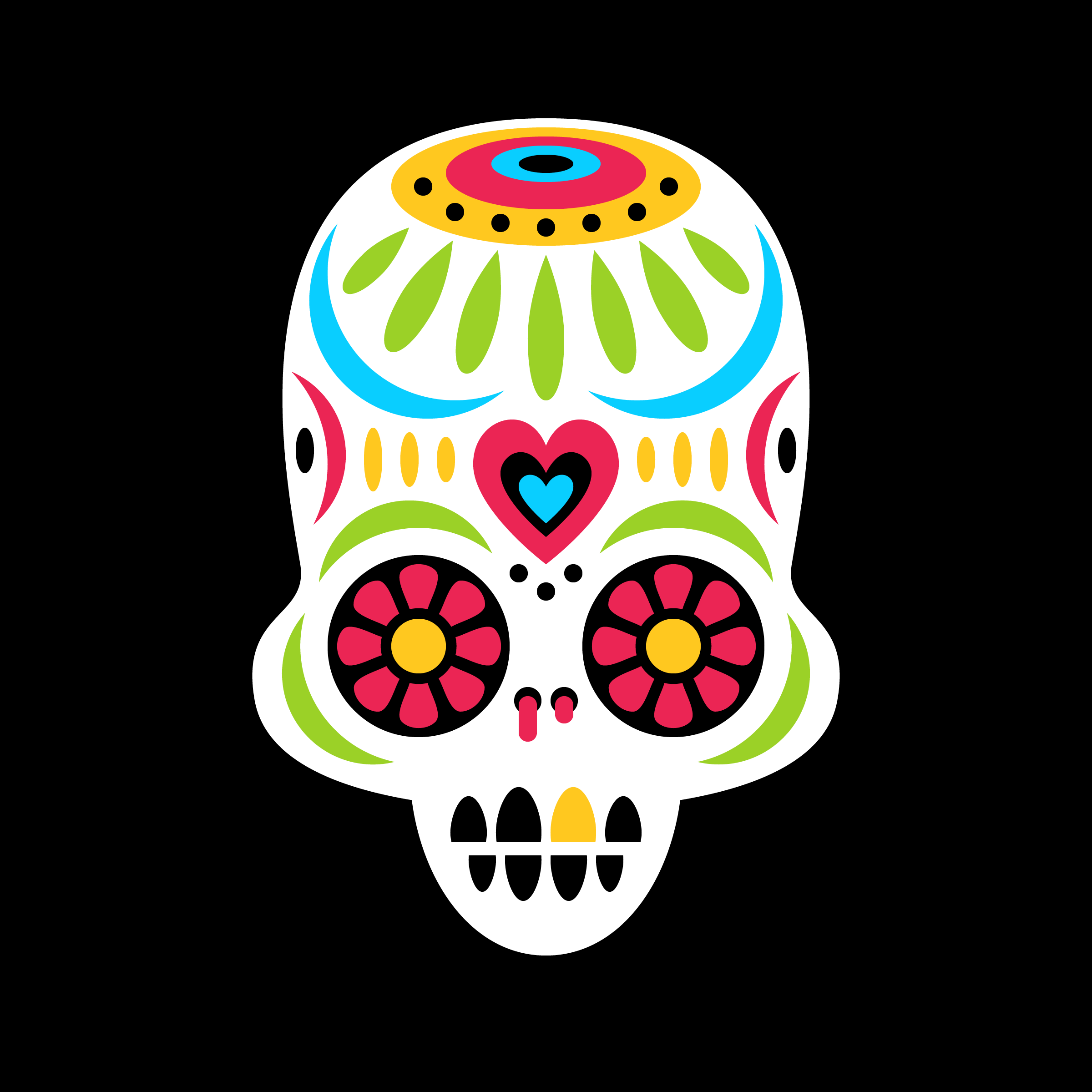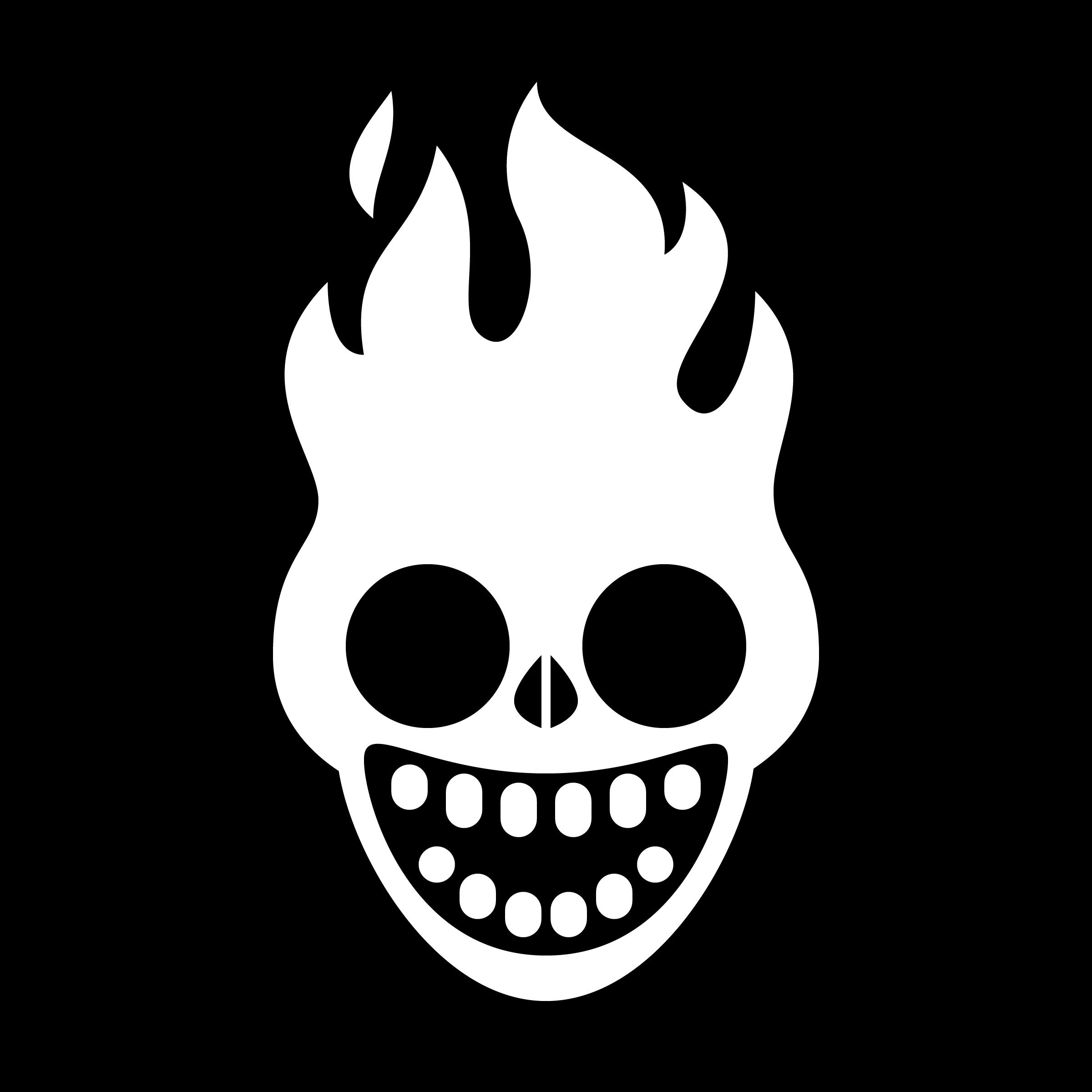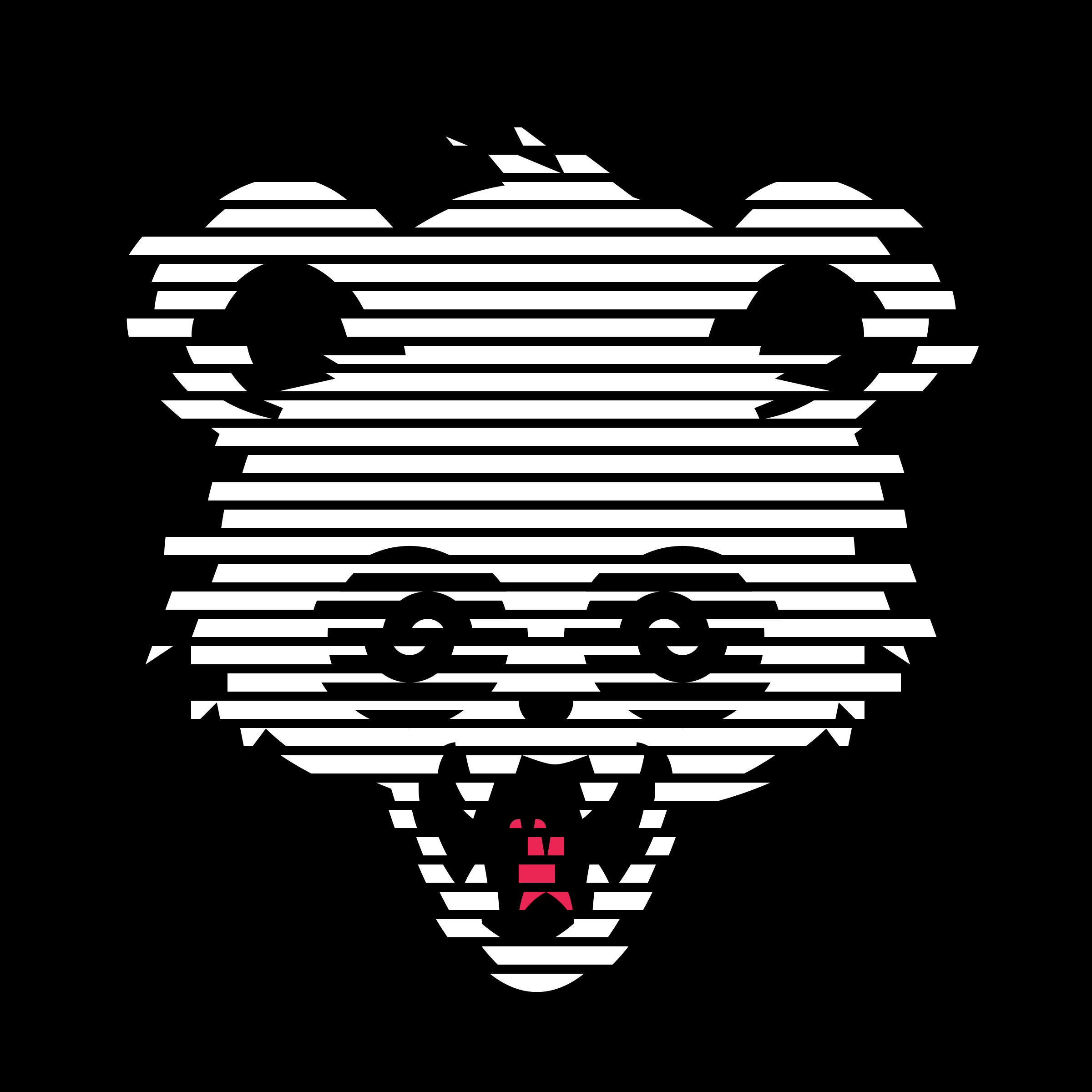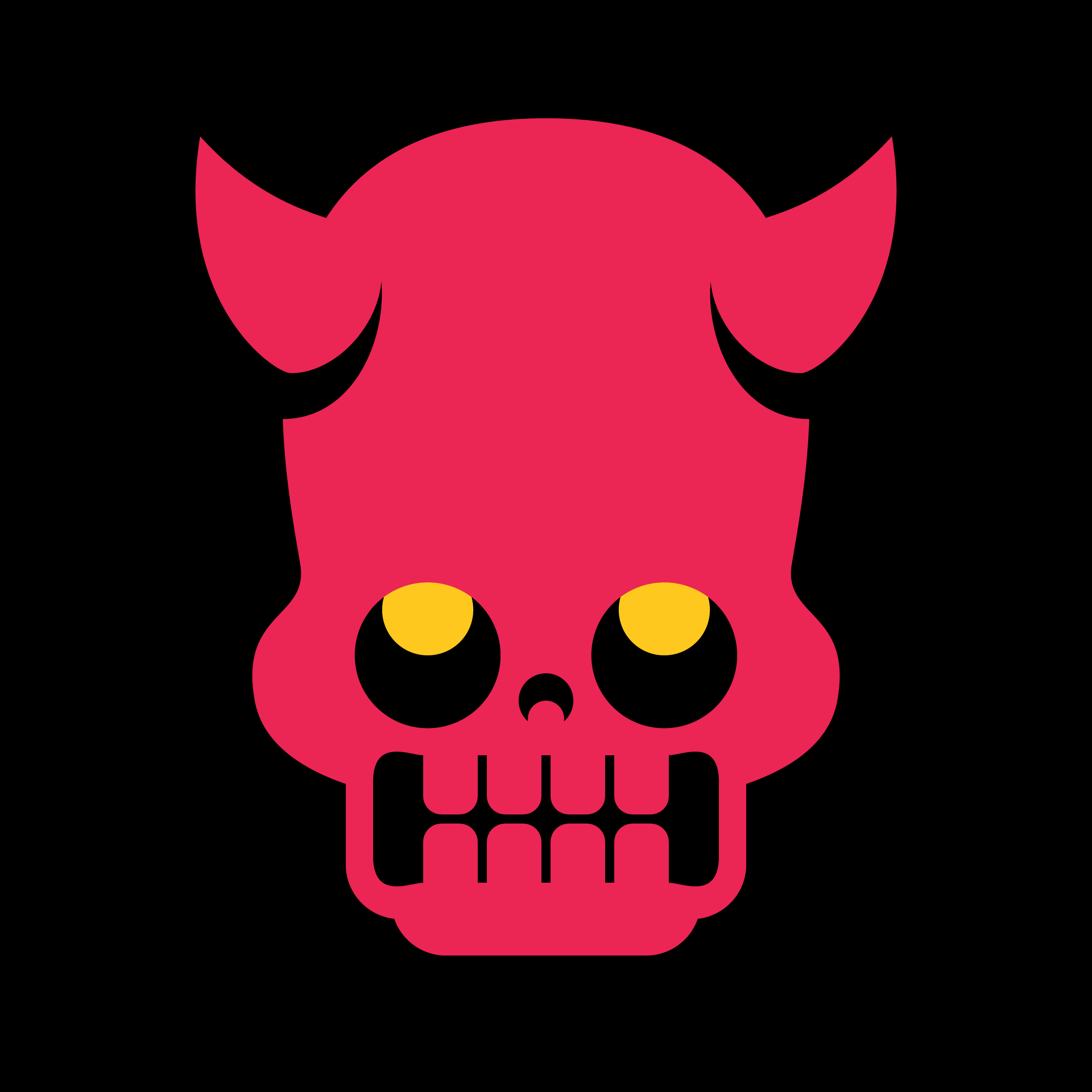David Morgan on Generative Art, Humor, and the Magic of Cartoons
By Cansu Waldron
David Morgan is an artist, designer, and developer whose work blurs the boundaries between art and code. With a background in web design and illustration, he crafts digital experiences that balance technical precision with creative play — transforming simple ideas into worlds that are both humorous and introspective. His aesthetic draws on a lifelong love of cartoons, character design, minimalism, and alternative culture, resulting in work that feels equal parts nostalgic and experimental.
His latest project, Spookees, is a tongue-in-cheek generative art series that grew out of an earlier NFT concept called NumbSkulls. After learning some hard lessons from that initial venture, David reimagined the project as a celebration of imperfection, creativity, and persistence. Built around a minimalist character logo he designed years ago, Spookees has evolved into a collection of weirdly charming digital beings — simple yet expressive, slightly spooky yet full of personality. Through projects like this, David continues to explore how design, humor, and code can come together to create meaning in the digital age.
We asked David about his creative process, his love of character design, and what inspires his offbeat digital worlds.
Your practice sits right at the sweet spot between art and tech — how did that balance first come about for you?
That's a big question, but in short it's a combination of timing and personal interests. For as long as I can remember, I've been an artist. As a child of the ’80s and ’90s, I grew up alongside the explosion of technology in computers and video games.
Art was my first pursuit. I graduated from a visual arts high school and earned a degree in computer animation — dreaming of becoming a character designer or concept artist for a studio like Pixar or Blizzard. After working as a lead animator and storyboard artist early in my career, I found the work surprisingly tedious and restrictive. I was burnt out and wanted more autonomy without facing the dreaded fate of the “starving artist.”
That led me into freelance design, which eventually led me to code. I gravitated toward logo and minimal character design — I love distilling something complex into a simple, expressive form. Later, I co-founded a WordPress theme and plugin company and taught myself various programming languages. CSS, in particular, came naturally to me.
I have an equal appreciation for both the right and left brain. I love logic, strategy, and analytical thinking just as much as creativity, curiosity, and exploration. That allows me to balance art and technology in a way that feels fulfilling.
Your new project Spookees feels playful, eerie, and adorable. Where did the idea come from, and what made you want to bring these little creatures to life?
It comes from a long-standing love of cartoons, character design, alternative culture, and minimalism. When the NFT craze was at its peak, it caught my attention. I was fascinated by how early collections like CryptoPunks were created. That led me to experiment with generative art for the first time.
Spookees originally began as an NFT project called NumbSkulls, which I founded and created entirely on my own — with the exception of the smart contract. That was my undoing. Unfortunately, that experience ended poorly, and I learned some hard lessons in the process. But I didn’t want to abandon the idea or the art. I wanted to reclaim it.
So Spookees became the rebirth and realization of that original vision. I started with a minimalist character logo I’d designed years earlier and built outward from there. Spookees began to take shape as simple, expressive, and slightly spooky little personalities brought to life through design and code.
Humor seems to run through a lot of your work. Do you consciously design for that lightness, or does it just sneak in naturally?
Perhaps a little of both. I think it's ingrained. My earliest inspirations were comic strips. I love the art of Bill Watterson and Calvin and Hobbes.
I'm a perpetual optimist, sometimes to my detriment. I acknowledge that darkness is always out there, but tend to choose the light. I think Spookees is a representation of that. The darkness is there, but the project invites you to laugh in the face of it. At 44, I’ve lived through my share of trauma and tragedy, but the joy and humor in life have always outweighed the pain.
Also, I love smart comedy disguised as stupid comedy — whether it's Dumb and Dumber, The Big Lebowski or The Chair Company. That stuff tickles my funny bone and inspires me. It creeps into my work. I have a hard time taking anything too seriously.
What were some of the unexpected challenges or fun discoveries you ran into while creating Spookees?
Most of the challenges were code-related, but the art brought its own puzzles. Really, the whole thing is a giant puzzle. Designing hundreds of traits that all fit together to form unique yet cohesive characters is tricky — you want variety, but not chaos. There’s a lot of iteration, testing, and making sure shapes align, or deliberately break the rules. As the possible outcomes expand into the millions, you can’t guarantee every combination will work perfectly, but you can get close.
The discoveries were the real reward. Learning to integrate CSS animation into traits and loop them seamlessly was a breakthrough. Another was connecting print-on-demand APIs, which allowed newly generated art to be instantly purchased and printed. That step turned Spookees from a digital experiment into a living brand — something both collectible and personal. I’m not aware of another project quite like it, and that possibility excites me.
Generative art often means letting go of a bit of control. How do you balance your role as a designer with the unpredictability of code?
I love the unpredictability. That was a huge attraction to generative art. I’m a decent hand-drawn illustrator, but I often lose interest once I can already visualize the finished piece. The curiosity and experimentation are what drive me.
Generative art keeps that sense of discovery alive all the way through the process. I can guide the system, but I never know exactly what will emerge. It’s endlessly surprising and rewarding. I think it's a process that I wanted to share through the Spookees website. For me, it feels a bit like using an Identify scroll in Diablo II to reveal the magical properties of an item. And I always loved that.
What is a fun fact about you?
I was born and raised in the swamps of Central Florida — fishing, surfing, camping, and exploring like many Florida kids. After college, I moved to Hawaiʻi sight unseen, lived out of my car for a few weeks, showered at public beaches, and eventually built a business and a life there for a decade. Surfing became a huge part of my world.
Later I lived in San Diego and Boulder before returning to Florida to start a family. Coming back helped me appreciate the weirdness of my home state with new eyes. I’ve always felt pulled between nature and technology — I love backpacking and surfing as much as gaming and creating digital art. As technology evolves, sometimes I find myself wanting to retreat into the wilderness, but I'm always drawn back to it.
What is a dream project you’d like to make one day?
I’d love to take everything I’ve learned from Spookees and create another generative art brand. I already have one in the early stages — it’s just a matter of finding the time and balance to bring it to life.
If I could trade the work I have to do for the work I want to do, and still support my family, I’d make that leap immediately.
Have there been any surprising or memorable responses to your work?
Honestly, the fact that anyone connects with Spookees at all is surprising and very meaningful. When you create something purely for yourself, you accept that it might not resonate with anyone else.
My commercial work aims to be useful and visually appealing — something people can use to solve a problem. But art is different. It’s personal and exploratory. So when others find joy in something born from that curiosity, it’s a wonderful surprise.
What’s next for you — are there other experiments or ideas you’re working on?
There’s never a shortage of ideas. Curiosity tends to open all kinds of doors. I have another generative art project waiting in the wings, one that builds on everything I’ve learned from Spookees but on a larger, more immersive scale. I’d love the time, space, and resources to bring that vision to life — possibly in collaboration with the right partners who share a love of design, technology, and branding.
Ultimately, I see Spookees and projects like it as more than art. They’re the beginning of new, interactive brands that can grow into experiences, communities, and products. With the right support, that potential could really expand into something special.























